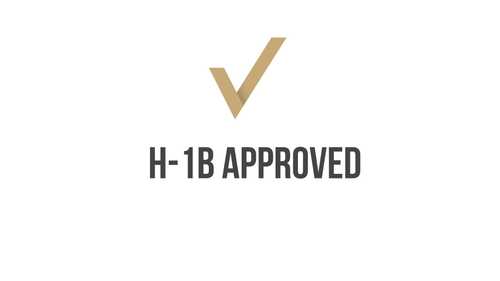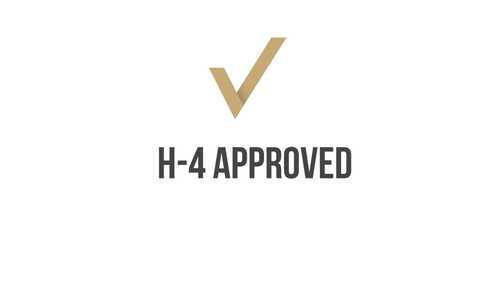Introduction: How to transition between E-2 Visa and Green Card
The path from an E2 visa to green card represents a critical juncture for many foreign investors seeking permanent residency in the United States. The transition process from a nonimmigrant E2 visa to green card can be intricate, involving substantial investments, stringent requirements, and careful planning. Understanding the nuances of this transition is essential for investors who wish to secure their future in the U.S. by transforming their temporary status into permanent residency.
The E2 visa is a temporary, nonimmigrant investor visa available to nationals of certain treaty countries who make a substantial investment in a U.S. enterprise. It requires proof of nonimmigrant intent and substantial involvement in the business’s development, making it a suitable option for investors looking to enter and operate a business in the U.S. However, the E2 visa does not inherently lead to a green card, necessitating a strategic transition for those aiming for permanent residency.
For many E2 visa holders, the transition to an EB-5 green card offers a viable route to achieving this goal. The EB-5 Immigrant Investor Program allows investors to obtain permanent residency through a significant investment in a new commercial enterprise that creates at least ten full-time jobs for U.S. workers. Unlike the E2 visa, the EB-5 green card does not require a specific nationality or a nonimmigrant intent, providing a broader and more flexible pathway to permanent residency. This is why understanding the E2 visa to green card process is crucial.
I offer confidential 30 minute & 1 hour consultations.
Schedule a consultation
The transition from an E2 visa to green card involves leveraging the existing E2 investment as part of the required EB-5 investment. The EB-5 program mandates a minimum investment of $1,050,000, or $800,000 if the enterprise is in a targeted employment area (TEA). This investment must come from lawful sources and be at risk, meaning it cannot simply be held in a bank account but must be actively deployed in the business. Additionally, the business must create at least ten full-time jobs for U.S. workers, excluding the investor’s family members and nonimmigrant visa holders.
One of the critical considerations in this transition is managing the shift from nonimmigrant to immigrant intent. The E2 visa requires proof that the applicant does not intend to immigrate permanently to the U.S., while the EB-5 visa embodies an intent to settle permanently. This change must be handled delicately to avoid complications with the U.S. Citizenship and Immigration Services (USCIS). Thorough documentation and legal guidance are crucial to navigating this aspect successfully.
Moreover, the source of funds for the EB-5 investment must be meticulously documented to prove their legality. This includes providing tax returns, bank statements, and evidence of the origin of the funds. For E2 visa holders, reinvesting retained earnings from the E2 enterprise can be part of the EB-5 investment, but it must be done correctly to meet the EB-5 requirements.
The EB-5 process begins with filing an I-526 petition to demonstrate the investment and job creation plan. Upon approval, if the investor is outside the U.S., they will go through consular processing to obtain the EB-5 visa. If already in the U.S., they will file for an adjustment of status to transition from E2 visa and green card to EB-5. Initially, successful applicants receive a conditional permanent residency for two years. After this period, they must file an I-829 petition to remove the conditions, proving that the investment has been sustained and the jobs have been created.
The transition from an E2 visa to green card is a promising pathway for investors seeking to make the U.S. their permanent home. It requires careful planning, substantial financial commitment, and strict adherence to legal requirements. By understanding the intricacies of both visa categories and seeking professional guidance, E2 visa holders can navigate this complex process and achieve their goal of permanent residency through the EB-5 program. For those asking “how can I change my E2 visa to green card?” or “can an E2 visa lead to a green card?”, this pathway offers a structured and achievable solution.
Read also: E2 Visa Processing Time: Everything You Need to Know
Read also: E2 Visa Renewal: The Process for Renewing Your E2 Visa and Meeting All Requirements
Read also: E2 Visa Requirements for Investors
Read also: E2 Visa Countries: Which Countries are Eligible for an E-2 Investor Visa?
What is the E2 visa?
The E2 visa is a temporary, nonimmigrant investor visa for foreign nationals who are citizens of one of approximately 80 countries that have signed a reciprocal commercial treaty with the United States. It does not “mature” into a green card. In fact, one of the requirements for being granted an E2 visa is proof of “nonimmigrant intent”. It also requires a substantial, non-marginal investment into an operational U.S. company that is majority owned by nationals of the treaty country. The visa holder must further be actively involved in the development of the enterprise.
If you would like to find out more about the E2 non immigrant investor visa, read our article providing detailed information about the E2 visa requirements.
Since the E2 visa is a nonimmigrant visa, many investors use the E2 visa to green card as a stepping stone towards permanent residence. Employment-based options that require PERM labor certification, such as an EB-2 or an EB-3 green card, are often unavailable for E2 visa holders due to the fact that the U.S. Department of Labor does not grant labor certification to applicants who have significant ownership interest. Another option is the EB-1C multinational manager green card, but it requires that the U.S. enterprise have common ownership with an overseas business, which the investor has managed for at least one year.
This is why the best green card option for E2 visa investors is often to transition their nonimmigrant E2 visa into an immigrant EB-5 green card. While an EB-5 regional center application is definitely an option that can be pursued, for most E2 status holders, the best option is usually to pursue an EB-5 visa based on the same enterprise that was the basis for the approval of the E2 visa. The amount invested for the E2 visa can be used as a “down payment” toward the EB-5 investment.
I offer confidential 30 minute & 1 hour consultations.
Schedule a consultation
What is an EB-5 Investor green card?
The EB-5 green card is an immigrant investor visa category which serves as a broader alternative to the E2 visa green card, and which leads to lawful permanent residency in the United States, and eventual naturalization and citizenship. Unlike the E2 visa green card, which is limited to nationals of countries which have signed a treaty with the United States, the EB-5 green card is not subject to such limitations. The EB-5 green card holder, her spouse and unmarried children under 21 can live, work, study, and retire in the United States. The EB-5 green card option may be the fastest way for you to obtain permanent residence in the United States if you do not have a US employer or family member who can sponsor you for a US green card or visa. The EB-5 green card program is also a great entrepreneur visa USA option for entrepreneurs whose startup business requires substantial capital investment.
Please keep in mind that there is a quota of EB-5 green cards being issued per fiscal year, which may cause backlogs in EB-5 green card issuance.

What are the EB-5 requirements?
Investment in a New Commercial Enterprise
The investment must be made into a lawful business enterprise engaging in for-profit activity that was established after November 29, 1990.
Personal investment amount of $800,000 or $1,050,000
The minimum investment amount for an EB-5 green card is $1,050,000. However, if your enterprise is located in a targeted employment area (TEA), such as a rural region or an area with high unemployment rates, the minimum investment amount can be lowered to $800,000.
It is crucial to note that the investment must be personal. While the E2 visa green card allows the investment to be made by a company either fully or partially owned by the applicant, an EB-5 visa can only be acquired through personal investment.
Keep in mind that retained earnings from your E2 visa green card enterprise do not count toward your EB-5 investment. The E2 visa green card enterprise will have to issue dividends to you from its past and current earnings, which you will have to re-invest into the enterprise in order for your investment to qualify for EB-5 green card purposes.
It is important that the reinvested funds come from dividends, and not be a withdrawal of the initial capital investment or a repayment of the initial capital investment. This critical distinction could cost your approval for an EB-5 green card. Our attorney’s combined experience in business and immigration law can help you structure your transaction to best fit both your business and EB-5 green card goals, thereby avoiding costly and irreversible mistakes.
At least 10 full-time qualifying US workers
In order for your EB-5 green card to be approved, you must either have already employed, or plan on employing at least 10 full-time workers. Full-time entails at least 35 hours per week. Your spouse and children do not count towards the 10 workers. The workers must generally be US citizens and lawful permanent residents who are eligible to work in the United States. Nonimmigrant visa holders will generally not satisfy this requirement. If you have not hired 10 workers at the time of your application, your business plan is a critical document that will help outline how you plan on hiring the required 10 US employees. Our EB-5 green card team will help guide you through your business plan preparation so that you can demonstrate your intent to hire the requisite 10 U.S. employees.
If you have already invested into an enterprise for an E2 visa green card, the employees you have hired may count towards the 10 jobs you are required to create in order to qualify for an EB-5 green card.
Lawful source of funds
To qualify for an EB-5 green card, the funds you invest into the enterprise must come from legal activity. This includes not only income from employment, or from the sale of property or a business, but also loans and gifts.
Funds at risk
The money you have invested to obtain an EB-5 green card must be at risk of a loss. What this essentially means is that you cannot just keep the funds in a bank account. For them to be considered an investment, your funds must be actively spent for business purposes.
Engagement in enterprise
While the E2 visa and green card requires that the visa holder “direct and develop” the enterprise she has invested into, the EB-5 visa allows for a lot less involvement in the business. The EB-5 green card rules require that the investor simply “engage in the management of the business.”
The EB-5 green card rules allow you to invest in specifically designated investment projects, known as Regional Centers, or to invest in your own commercial enterprise.
If you would like to find out more about the EB-5 green card, the Regional Centers and Direct Investment options, and whether this is the correct visa for you, check out our article on the EB-5 green card process, or schedule a consultation with our immigration attorney for an assessment of your case.
How to transition from E2 visa holder status to an EB-5 green card?
If you are currently outside of the United States, you can apply for an EB-5 green card from a U.S. Embassy or a Consulate abroad. This is called consular processing, or visa processing.
If you are currently in the United States in lawful status, you can apply for an adjustment of status, the conversion of your E2 visa to green card processing time to EB-5 permanent residence status.
Successful EB-5 US investor green card applicants initially receive conditional permanent residence for 2 years. After 2 years, you must petition USCIS to obtain a permanent EB-5 green card. After 5 years of being a permanent resident of the United States you can apply to become a naturalized US citizen.
The process of transitioning from an E2 visa to green card is extremely time-sensitive – the timing for filing your paperwork is critical for the successful approval of your green card application. Contact our experienced investor visa USA attorney now so that you don’t have to brave the transition from an E2 visa to green card on your own.
I offer confidential 30 minute & 1 hour consultations.
Schedule a consultation
Key Considerations for the Transition from E2 Visa to Green Card
Transitioning from an E2 visa to green card involves several critical steps and considerations that require meticulous planning and execution. Here, we’ll delve into some of the most important factors to keep in mind as you embark on this journey.
Understanding Nonimmigrant Intent and Its Implications
The E2 visa green card transition is complex partly because the E2 visa requires proof of nonimmigrant intent, meaning the visa holder must demonstrate that they do not intend to immigrate permanently to the United States at the time of their E2 application. However, transitioning to a green card means a shift towards immigrant intent. This change needs to be managed carefully to avoid any potential issues with the U.S. Citizenship and Immigration Services (USCIS).
Investment Requirements for EB-5 Visa
For those looking to transition from E2 visa and green card, understanding the investment requirements of the EB-5 visa is crucial. The investment amounts are substantial and must be sourced legally. An EB-5 applicant must invest $1,050,000, or $800,000 if investing in a targeted employment area. This investment must be made into a new commercial enterprise and should lead to the creation of at least 10 full-time jobs for U.S. workers.
Job Creation and Business Plan
A significant aspect of the visa E2 green card process is the requirement to create at least 10 full-time jobs. For many E2 visa and green card holders, this requirement can be met through the expansion of their existing business. A robust business plan demonstrating how the required jobs will be created and sustained is essential for the EB-5 application.
Source of Funds Documentation
Another critical component of the can E2 visa apply for green card process is proving that the funds used for the investment are from a lawful source. This involves providing extensive documentation, including tax returns, bank statements, and proof of how the funds were acquired. Ensuring that this documentation is thorough and accurate is vital for the success of the application.
Legal and Financial Advisory
Given the complexities involved in transitioning from E2 visa to green card processing time, seeking the advice of legal and financial experts is highly recommended. Experienced immigration attorneys can help navigate the legal landscape, while financial advisors can provide guidance on the best ways to structure investments to meet EB-5 requirements.These experts will guide your visa E2 green card process.
Timing and Application Process
The green card from E2 visa process involves several steps, including filing an I-526 petition, which is the initial EB-5 petition. After approval, if you are outside the U.S., you will undergo consular processing. If you are in the U.S., you will file for adjustment of status. Each step has specific timing requirements and potential delays, making it crucial to plan and file timely to avoid unnecessary complications in your visa E2 green card application.
Conditional Permanent Residence
Once the EB-5 application is approved, the investor and their immediate family receive conditional permanent residence for two years. During this period, it’s essential to fulfill all the requirements stipulated in the initial petition. Failure to do so can lead to the denial of the removal of conditions application, thus affecting the permanent green card status.
Removal of Conditions
After two years, EB-5 investors must file an I-829 petition to remove the conditions on their green card. This involves demonstrating that the investment has been sustained and that the required jobs have been created. This step is crucial in the does E2 visa lead to green card process, as it solidifies the transition from a conditional to a permanent green card.

Addressing Common Questions and Concerns
How Can I Change My E2 Visa to Green Card?
One of the most frequently asked questions is, how can I change my E2 visa to green card? If you are wondering can E2 visa apply for green card you should know that the process involves filing an I-526 petition under the EB-5 program and then, upon approval, either consular processing or adjustment of status, depending on whether the applicant is inside or outside the U.S. This path requires careful planning and substantial investment.
E2 Visa Spouse Green Card
The question of whether an E2 visa spouse green card is attainable is also common. The answer is yes; the spouse of an EB-5 applicant can also obtain a green card as a dependent. This allows the spouse to live, work, and study in the U.S. along with the primary applicant. It is recommended to discuss with your attorney when can E2 visa apply for green card for your spouse.
Can E2 Visa Be Converted to Green Card?
Many wonder, can E2 visa be converted to green card? While the E2 visa itself cannot be converted directly into a green card, holders can apply for an EB-5 visa, which leads to a green card. This visa E2 green card process involves meeting the EB-5 requirements, including investment and job creation criteria.
Can an E2 Visa Lead to a Green Card?
Similarly, the question can an E2 visa lead to a green card is often posed. The answer is yes, through the EB-5 investor program or other eligible immigrant visa categories. Each path has specific requirements that must be fulfilled.
Can E2 Visa Holder Apply for Green Card?
Lastly, can E2 visa holder apply for green card? E2 visa holders can apply for a green card through the EB-5 program, among other options. This process involves substantial investment and compliance with specific regulations.
Practical Tips for a Successful Transition
Early Preparation
Start preparing early by gathering all necessary documentation, consulting with experts, and ensuring your business is structured to meet EB-5 requirements. Early preparation can significantly enhance your chances of a smooth transition from E2 visa to green card. Understanding the specific requirements for an EB-5 visa, such as the minimum investment amounts and job creation criteria, will help you plan effectively. If you’re wondering, “how can I change my E2 visa to green card?”, early preparation is your first step. Organize your financial records, business plans, and proof of lawful source of funds to ensure that all documentation aligns with the EB-5 criteria.
Detailed Record-Keeping
Maintain detailed records of your investments, business operations, and job creation activities. These records will be crucial when filing your I-526 and I-829 petitions. Detailed record-keeping is essential for answering the question, “can an E2 visa lead to a green card?” Accurate and comprehensive documentation can make a significant difference in the approval process. For those asking, “can E2 visa holder apply for green card?”, keeping meticulous records of how your E2 investment has been used and the jobs created will support your EB-5 application.
Professional Guidance
Engage with experienced immigration attorneys and financial advisors who specialize in EB-5 cases. Their expertise can help navigate the complex legal and financial aspects of the transition. Professionals can provide tailored advice on the nuances of the E2 visa to green card process, helping you understand the E2 visa to green card processing time and the specific requirements for your situation. For E2 visa holders, having professional guidance can clarify questions like, “can E2 visa be converted to green card?” and “does E2 visa lead to green card?” Their assistance can be invaluable in avoiding pitfalls and ensuring a successful transition.
Stay Informed
Keep yourself informed about any changes in immigration laws and regulations that might affect your E2 visa green card transition. This includes staying updated on USCIS policies, investment requirements, and job creation criteria. Changes in regulations can impact the E2 visa to green card processing time, so being aware of the latest developments is crucial. For those considering a green card from E2 visa, understanding current legal landscapes and how they affect your application process can be beneficial. Staying informed also helps answer questions like, “how can I change my E2 visa to green card?”
Networking and Support
Connect with other E2 visa and green card holders who have successfully transitioned to an EB-5 green card. Their experiences can provide valuable insights and support throughout your journey. Networking with individuals who have navigated the visa E2 green card process can offer practical advice and moral support. They can share strategies that worked for them, helping you understand the steps involved in the transition from E2 visa to green card. This community can also help you gauge realistic expectations about the E2 visa to green card processing time and provide recommendations for trusted professionals who can assist you.
Conclusion: E2 Visa and Green Card Conversion Process
The transition from an E2 visa to green card represents a pivotal step for investors who wish to secure permanent residency in the United States. This journey, while complex, is a viable and rewarding path when approached with thorough preparation and a clear understanding of the processes involved. The E2 visa provides a gateway for investors to enter and operate a business in the U.S., but it does not inherently lead to permanent residency. Therefore, understanding the transition to an EB-5 green card is crucial for those aiming for a more permanent status.
For those asking, “how can I change my E2 visa to green card?”, the EB-5 program offers a structured route. The EB-5 program requires a substantial investment and the creation of at least ten full-time jobs for U.S. workers, which aligns well with many E2 visa holders’ existing business activities. This transition leverages the investment and business operations initially set up under the E2 visa, making the process of obtaining a green card from E2 visa more attainable.
One of the primary concerns for many is the E2 visa to green card processing time. This process involves several steps, including filing an I-526 petition and, upon approval, either consular processing or adjustment of status depending on whether the applicant is inside or outside the U.S. The E2 visa to green card processing time can vary, so timely and well-organized preparation is essential to avoid delays.
The importance of detailed record-keeping cannot be overstated. Maintaining comprehensive records of your investments, business operations, and job creation activities is vital. These records will support your petitions and address the question, “can E2 visa holder apply for green card?” Thorough documentation ensures that you can meet all EB-5 requirements, thereby increasing your chances of a successful transition.
Professional guidance is another critical factor in navigating the E2 visa to green card process. Immigration attorneys and financial advisors who specialize in EB-5 cases can provide invaluable assistance. They can help clarify complex issues, such as whether “can E2 visa be converted to green card?” and offer strategies to meet all legal and financial criteria efficiently. Their expertise helps in avoiding common pitfalls and ensures that all aspects of your application are handled correctly.
Staying informed about changes in immigration laws and regulations is crucial for a smooth transition. Keeping up-to-date with USCIS policies, investment requirements, and job creation criteria is necessary for addressing questions like “does E2 visa lead to green card?” Staying informed allows you to adapt to any regulatory changes that might affect your application and ensures that you are always one step ahead in the process.
Networking with other E2 visa and green card holders can provide practical insights and support. Engaging with a community of individuals who have successfully navigated the visa E2 green card process can offer valuable advice and moral support. They can share their experiences, helping you understand the intricacies of the transition from E2 visa to green card and set realistic expectations.
In conclusion, the journey from an E2 visa to green card, while challenging, is a feasible path to permanent residency in the United States. By understanding the requirements, preparing thoroughly, keeping detailed records, seeking professional guidance, staying informed, and connecting with a supportive community, investors can navigate this transition successfully. The EB-5 program provides a clear pathway for E2 visa holders to achieve their goal of permanent residency, offering stability and a prosperous future in the United States.
I offer confidential 30 minute & 1 hour consultations.
Schedule a consultation
Our Legal Services
If you would like to schedule a consultation with our immigration lawyer, follow the link and click on “Schedule a Consultation.” You can also reach us via email at [email protected], or call us at (646) 354-3780.
During your consultation, our E2 visa attorney will review your goals and provide an honest assessment as well as customized plan for your case, and guidance regarding your next steps.
Disclaimer: This blog article is provided by Pandev Law, LLC for general educational and informational purposes only. Although this article discusses general legal issues, it does not constitute legal advice nor does it establish an attorney-client relationship. No reader should act or refrain from acting on the basis of any information presented in this article, or elsewhere on this website, without seeking the advice of appropriate legal counsel, or other professional counsel, licensed in the relevant jurisdiction. Pandev Law, LLC expressly disclaims any and all liability with respect to any actions taken, or not taken, based on any content of this article or website. This blog article may constitute attorney advertising. Prior results do not guarantee a similar outcome.














